Being Kemetic and weathering the treacherous seas of the conscious community can be quite daunting in 2019. I do not make it my business to partake in titi (gossip). However, given the current climate among the conscious community, I believe that speaking truth may be interpreted as titi, hence why I bring this up before I continue to share my analysis on the topic. Our wisdom texts advise us, "we mustn't confuse mastery with mimicry, knowledge with superstitious ignorance."
In my opinion, being a Kemite in 2019 can be so challenging and confusing due to an abundance of mimicry and superstitious ignorance, manifesting in the following two ways:
1) An unclear definition as to what what and who a Kemetic Practitioner is.
2) Internet debates, podcasts and general social media.
Now, if this is in fact true, how can we combat these two culprits of misinformation?

Who and what is a Kemite?
Kemeticism is a reconstructionist, monotheistic religion based on ancient Kemetic religious traditions and practices of Kemet. However, as in ancient times, there are vast and varying sets of beliefs and practices among the factions within the faith. However, modern Kemites are linked by their common focus on the interaction between the world of humans and the world of the divine. Nevertheless, there are key things which are passionately held in common, and which modern Kemites try to reflect in the way we live. What unites modern Kemites is their belief in five main tenants, with some additions and or modifications according to one’s local temple leadership. The five tenant beliefs are: Belief in NTR, Belief in the Neteru, acknowledgement and respect for our ancestors, belief and adherence in divine morals and ethics and initiation.
Belief in NTR
Belief in NTR (Ntr, Neter, Netjer, Netcher) is the main tenant among modern Kemites. NTR is the true nature of the creator who is beyond full human comprehension. In contemporary times, many will refer to NTR as God, The Universe, The Creator, the Almighty, the Divine Source, etc. Kemites understand NTR to be, the highest Supreme Entity, the ONE Creator of the Heavens, Earth and all of Nature, “Everything that one can perceive and everything one cannot perceive, who is everything, yet is no thing.”
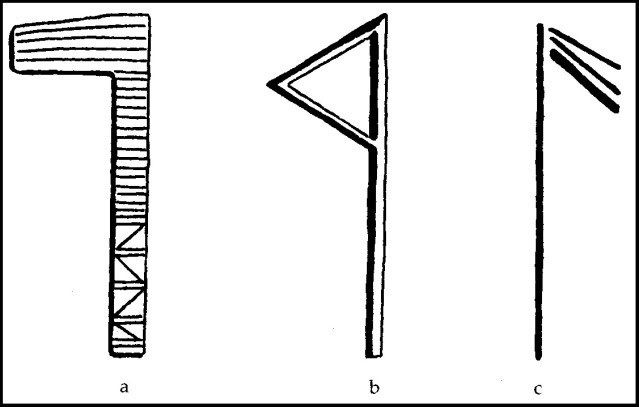
Belief in the NTRU
Belief in the NTRU (the manifestations of NTR; laws and principals of nature), is the second tenant among modern Kemites. “[A] fatal error of Egyptology is the use of the terms "gods" and "goddesses" to describe the attributes, aspects, and differentiations of NTR(divinity)…” which we identify as the NTRU. “The NTRU are the personification of the energies/powers/forces that through their actions and interactions, created, maintained, and continue to maintain the universe.” And, are responsible for the maintenance of life as we know it.
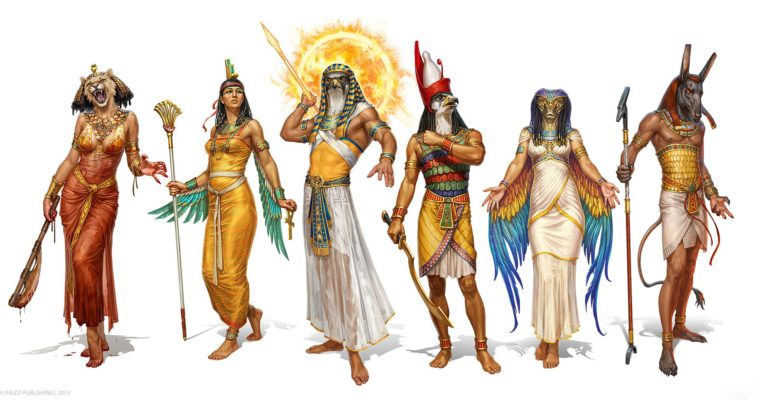
Acknowledgement and Respect for our Ancestors
There is a popular saying that we [people] are spiritual beings having a human experience. Kemetic practitioners believe that each person possesses a ba, the immortal life-force or soul which leaves the body at the point of death. After judgment in the Duat (the underworld), the ba is then transmuted or born into one of the nine realms, which consists of seven heavens and two lands. Since the first, or top two realms are reserved for NTR and the NTRU, the proceeding realms for ancestors, in order from the heavens, are:
The Iakhu: Light Beings
The Shepsu: Venerated Ancestors
The Sepiu: Ancient Shaman & Medicine Men
The Abetet: Beloved Ones
The Akheru: Recently deceased
The reason for the acknowledgement and respect for our Ancestors is because, the ba of a higher realm can, “go to a lower sphere; and in many cases, they do just that in order to aid and assist those souls who are not aware…departed ancestors inhabit…nearest the earthly realm. They connect these two worlds specifically by linking earthly lineage members with their earliest forbearers. Because of their proximity, and because they one walked the earth, ancestors are prone to intervention in daily affairs….The departed spirits convey warnings, encouragement, direction, and admonitions to human beings through various means such as in dreams, or through subtle communications via birds, animals, a candle flicker, … etc.”
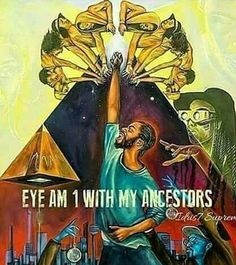
Belief and Adherence in Divine Morals and Ethics
Ethics and morals both relate to “right” and “wrong” conduct. The concept of what the ancient Kemites considered correct moral conduct can be deduced from various written sources, particularly autobiographies and texts that we now refer to as wisdom literature.

Ma’at includes living, speaking, thinking and doing the way of truth, justice, righteousness, and harmonious balance. The purpose of Ma'at is to divert chaos (Isfet). To do this, modern Kemites recite the 42 Tepra en Ma’at, usually twice daily. Since the 42 Tepra en Ma’at were not originally in English, it is very plausible that each modern denominations or temples have slight variations to their translations. However one widely accepted translation is as follows:
I will not do iniquity.
I will not rob with violence.
I will not do violence to anyone or thing.
I will not commit theft.
I will not murder any man or woman.
I will not defraud offerings.
I will not act deceitfully.
I will not rob the things that belongs to NTR.
I will not tell lies.
I will not snatch away food.
I will not utter evil words.
I will not attack anyone.
I will not slaughter the cattle set apart for the NTRU.
I will not eat my heart.
I will not lay to waste the plough lands.
I will not be an eavesdropper or pry into matters to make mischief.
I will not speak against anyone.
I will not allow myself to become angry without cause.
I will not commit adultery.
I will not commit any sin against my own purity.
I will not cause terror.
I will not do that which is abominable.
I will not utter fiery words nor be a man or woman of anger.
I will not stop my ears against words of right or wrong.
I will not stir up strife.
I will not cause any to weep.
I will not lust, commit fornication, nor lay with others of my same sex.
I will not avenge myself.
I will not work grief or abuse anyone.
I will not act insolently or with violence.
I will not judge hastily.
I will not transgress or anger NTR.
I will not multiply my speech overmuch.
I will not do harm or evil.
I will not work treason or curses on the king.
I will not befoul the water.
I will not speak scornfully.
I will not curse the NTR.
I will not behave with arrogance.
I will not be overwhelmingly proud or seek distinctions.
I will not magnify my condition beyond what is fitting or increase my wealth, except with such things as are justly my own possessions.
I will not slight the NTR in my native town.
Every Day Ma’at
As Kemites, it is our aim to live life as close to ma’at as possible. However at times, people can get knocked off track when thinking about that ma’at looks like in everyday life. Living ma’atically does not mean living as a perfect person, but constantly aiming to strike the perfect balance at all times in all situations. Though all of Kemetic principals contain profound universal truths, but it is of no use if it isn’t relatable and understandable for the everyday practitioner. It is the synchronization of one’s mind and your heart that impacts one’s life. Ma’at can be best explained as truth, justice, righteousness, balance, harmony, order, and reciprocity. Though these phrases can seem like abstract principals, their application in our everyday lives is quite simple.
Truth – Living to one’s highest reality
Justice – Doing what is right at all times, no matter what.
Righteousness – Respect for NTR
Balance – The state of being objective and fair and finding equilibrium between emotions and Intellect
Harmony – Working together with yourself and others in a positive manner
Order – Mastering one’s affairs and living life in its fullest capacity
Reciprocity – Giving one’s gifts freely and respectfully
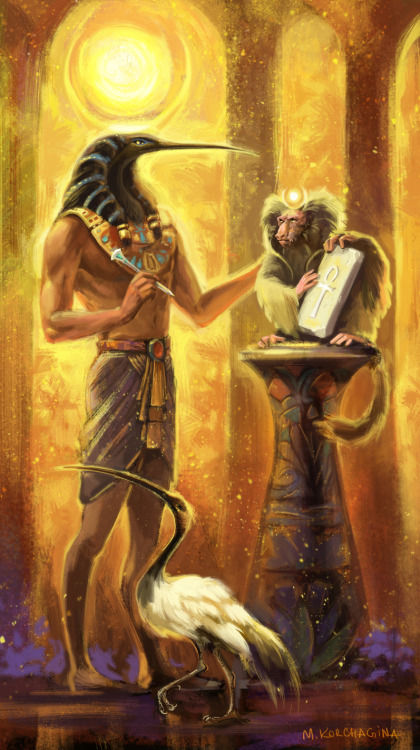
The Seven Hermetic Principles
Attributed to NTR Djehuty, these principals serve as a philosophy to base one’s life. The NTR Djehuty(Jehuti, Tahuti, Tehuti, Zehuti, Techu, or Tetu), is regarded as One, self-begotten, and self-produced, he is the master of both physical and moral (divine) law; properly uses of Ma'at. All the fundamental and basic teachings within the Kemetic paradigm may be traced back to Djehuty. These seven principals are:
The Principle of mentalism: "The All is mind, the Universe is mental."
The Principle of correspondence: "As above, so below; as below, so above."
The principle of vibration: "Nothing rests, everything moves; everything vibrates."
The principal of polarity: "Everything is dual; everything has poles; everything has its pair of opposites; like and unlike are all the same; opposites are identical in nature, but different in degree; extremes meet; all truths are but half-truths; all paradoxes may be reconciled."
The principle of rhythm: "Everything flows, out and in; everything has its tides; all things rise and fall; the pendulum swing manifests in everything; the measure of the swing to the right is the measure of the swing to the left; rhythm compensates."
The principle of cause and effect: "Every cause has its effect; every effect has its cause; everything happens according to law; chance is but a name for law not recognized; there are many planes of causation, but nothing escapes the law."
The principal of Gender: "Gender is in everything; everything has its masculine and feminine principle; Gender manifests on all planes."
Meju Semenket en Sheti (The Ten Virtues of an Initiate)
An outline for practitioners is to seek Ma'at; to become one with Ma'at. Our ancient Kemitic ancestors said that the path was through the cultivation of virtues and Knowledge of your true Self. Through study, discipline, and the knowledge of cultural rites of passage, the Ten Virtues of an Initiate were sought by the initiates in ancient Kemet to reach this goal.
Control of thoughts
Control of actions
Devotion of purpose
Have faith in the ability [in of your teacher] to teach [you] the truth.
Have faith [in yourself] to assimilate the truth
Have faith [in yourself] to wield the truth
Be free from resentment under the experience of persecution.
Be free from resentment under the experience of wrong.
Cultivate the ability to distinguish between right and wrong - and
Cultivate the ability to distinguish between the real and the unreal
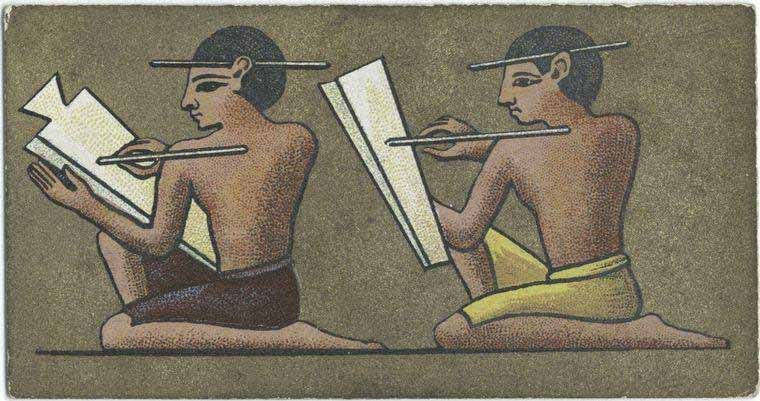
Initiation
Initiation is a rite of passage marking entrance or acceptance into a group or society. Many cultures practice or have practiced initiation rites, including the ancient Kemites. Temples and shrines existed from the beginning of Kemetic history, and at the height of the civilization they were present throughout the 42 nomes of Kemet. Temples were considered dwelling places for the different NTRU. Each city had a temple built for the NTRU of that city. The purpose of the temple was to be a cosmic center by which humans could commune with the NTR.
In ancient times, it was the duty of the Nwst Biti to carry out temple rituals, as he was the official representative to NTR. However, ritual duties were almost always carried out by Hemu, Hemetu , Wab Hemu, Hemetu, Kher heb, Kher hebet, Sesh per ankh, Sesh ked. During the Old and Middle Kingdoms, there was no separate class of priests; instead, many government officials served in this capacity for several months out of the year before returning to their secular duties. Only in the New Kingdom did professional priesthood become widespread, although most lower-ranking priests were still part-time. All were still employed by the state, and the Nswt Biti had final say in their appointments.

Historically, the temple staff also included many people other than priests, such as musicians and chanters in temple ceremonies. Outside the temple were artisans and other laborers who helped supply the temple's needs, as well as farmers who worked on temple estates. All were paid with portions of the temple's income. Large temples were therefore very important centers of economic activity, sometimes employing thousands of people.
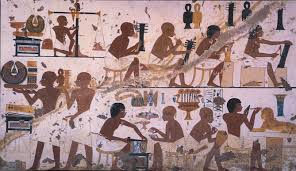
In ancient Kemet there were many degrees of initiation for the many levels of priesthoods responsible for the upkeep of the local temple. Therefore, as the ancient Kemites had great purpose for the process of initiation, so do modern Kemites. Unfortunately, due to the present geographical, social and political position in the west modern Kemites can no longer practice to the same extent of our ancient ancestors. At this time, there are no proper sacred temples, pyramids, communities, etc to observe our traditions and customs in their full glory. However, through initiation, modern Kemites can remove programming and western socialization and begin anew. On a personal level, through the power of initiation a practitioner will accept a new level and learning process that will, ultimately, lead to the goal: union with NTR through attaining Ma’at. In addition to this, on a socio-economic level, modern Kemites can join one another to build communities as our ancient predecessors did through service at local temples and shrines. When both the personal and socio-economic efforts converge, they lead to shared spiritual, cultural, and family values that will support the constant and consistent proliferation of Ma’at on Earth.
Internet Debates, Podcasts and General Social Media...
Now, to say or even suggest for modern practitioners to avoid all of the information that the internet has to offer is excessive. However, seekers must recognize that many debaters and people on social media fall into one of the following categories:
Egyptologists
These are very intelligent people who are helpful when learning about the historical significance of the Hapi [Nile] Valley civilization and it's contribution to human history. The point to be weary about these personalities is that they often attempt to educate the masses about the history while totally isolating and or ignoring the spiritual and or metaphysical pieces that made the civilization great. It is the spiritual piece that united and gave foundation to the society, without which it would not have been able to continue for the thousands of years that it did. One way that this can be illustrated is through the study of Mentuhotep II and his desire and attention to return to the traditions of the Old Kingdom. To further this point, most times these people will promote the western ideas of individualism and atheism. The most telling sign is that these scholars are purely secular and have no connection to any Kemetically based spiritual practice.
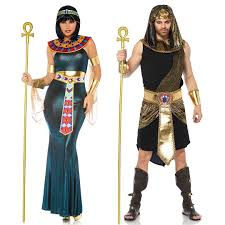
New Age Pushers
This group of people promote the use of various spiritual tools (yoga, meditation, waist beads, yoni steams, crystal work, etc) and have very clear explanations about the benefits and relevance of using such tools. The issue with this is that the tools are often promoted and paraded as the be all end all of the spiritual system itself. All that is talked about is that one tool and when faced with inquiry about an issue, that is the only tool recommended to address said problem. Often times, these people directly make money off of selling or promoting this one tool.
Kemetic Practitioners understand that there are many tools that can be used to connect and commune with the divine. Furthering this point, practitioners understand that historically, there were many things that the everyday person did not do on their own, rather went to a professional for assistance. This is similar to googling an ailment, diagnosing yourself, and treating yourself versus going to see a holistic or medical doctor to go through this process. For small issues this this might be acceptable, but everyone reaches a point where they require help and guidance outside of themselves. Finally, the tools that are recommended often have names and even origins that are not Kemetic, but rather come from India, China, West Africa, etc. Now, it is understood that many ancient cultures grew out of Kemetic wisdom, however, it is not necessary to chant in Hindi to connect with the NTRU...they do not speak that language. It is the job of the Kemetic practitioner to overcome laziness and convenience of foreign terms and tools when doing spiritual work.
Spiritual Amalgamators
This last point is one that some people may have much disagreement with. As I mentioned in the last section, there are many people that take the correspondences of other spiritual systems and attempt to use these as true Kemetic dogma. To build upon the point made about the influence of ancient Kemet on various ancient cultures among the continents, I understand that the ancient Kemties moved into West Africa after the final fall of Kemet (more information found in Exiled Egyptians by Moustafa Gadalla), however as I said earlier, I believe that using the Youraba, Vodun, or any other West African system is laziness on the part of the practitioner. This criticism isn't to say that a person cannot observe, analyze and use these explanations and understandings as a stepping stone to become closer to the NTRU, however as the saying goes, "If you knew better you'd do better". To be frank, it is disrespectful to these other systems to mix them with the Kemetic system out of convenience to the practitioner. The danger that this poses for Kemites is that it sets a foundation that is unclear and always looks outside of Kemet for it's values, perception, comprehension, and evaluation of the universe.


Comments